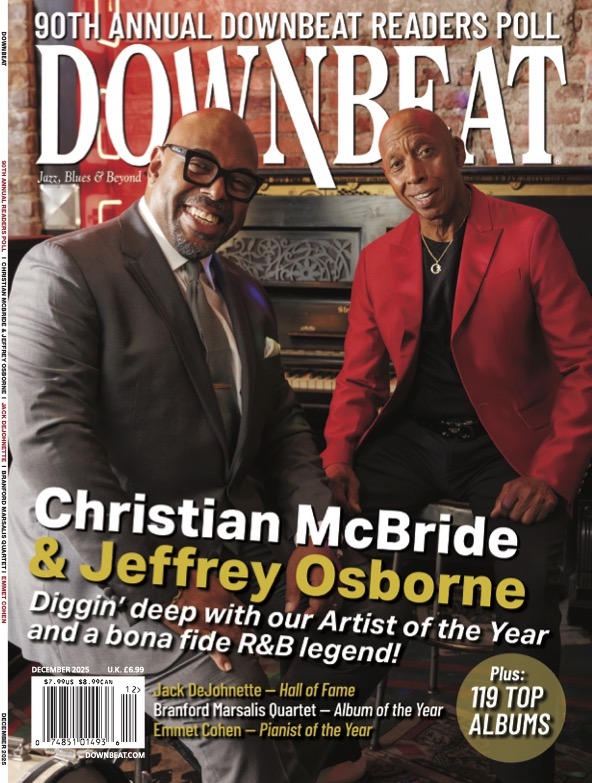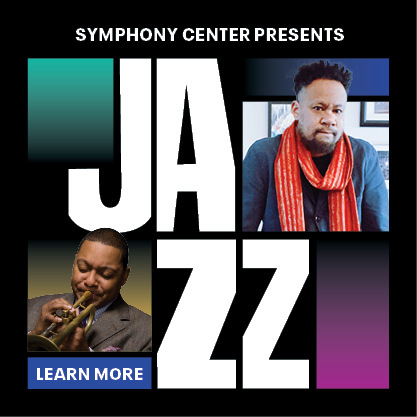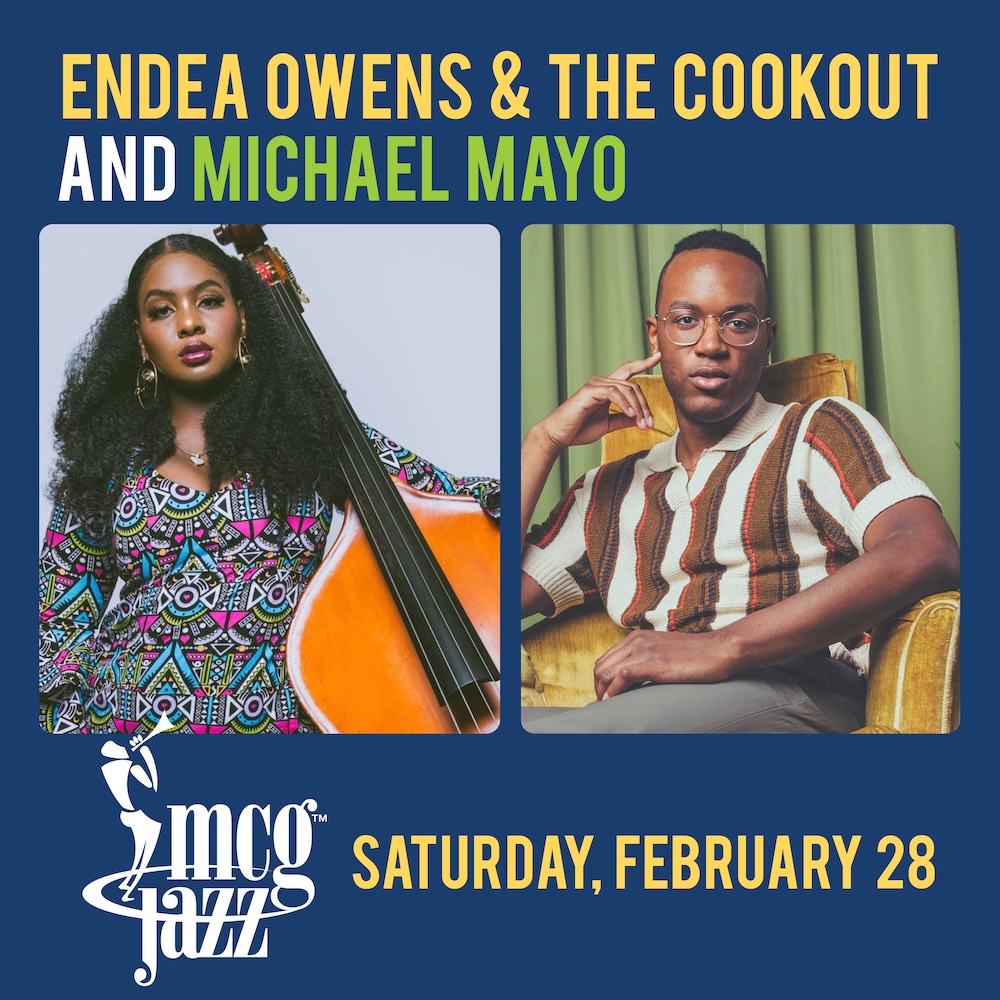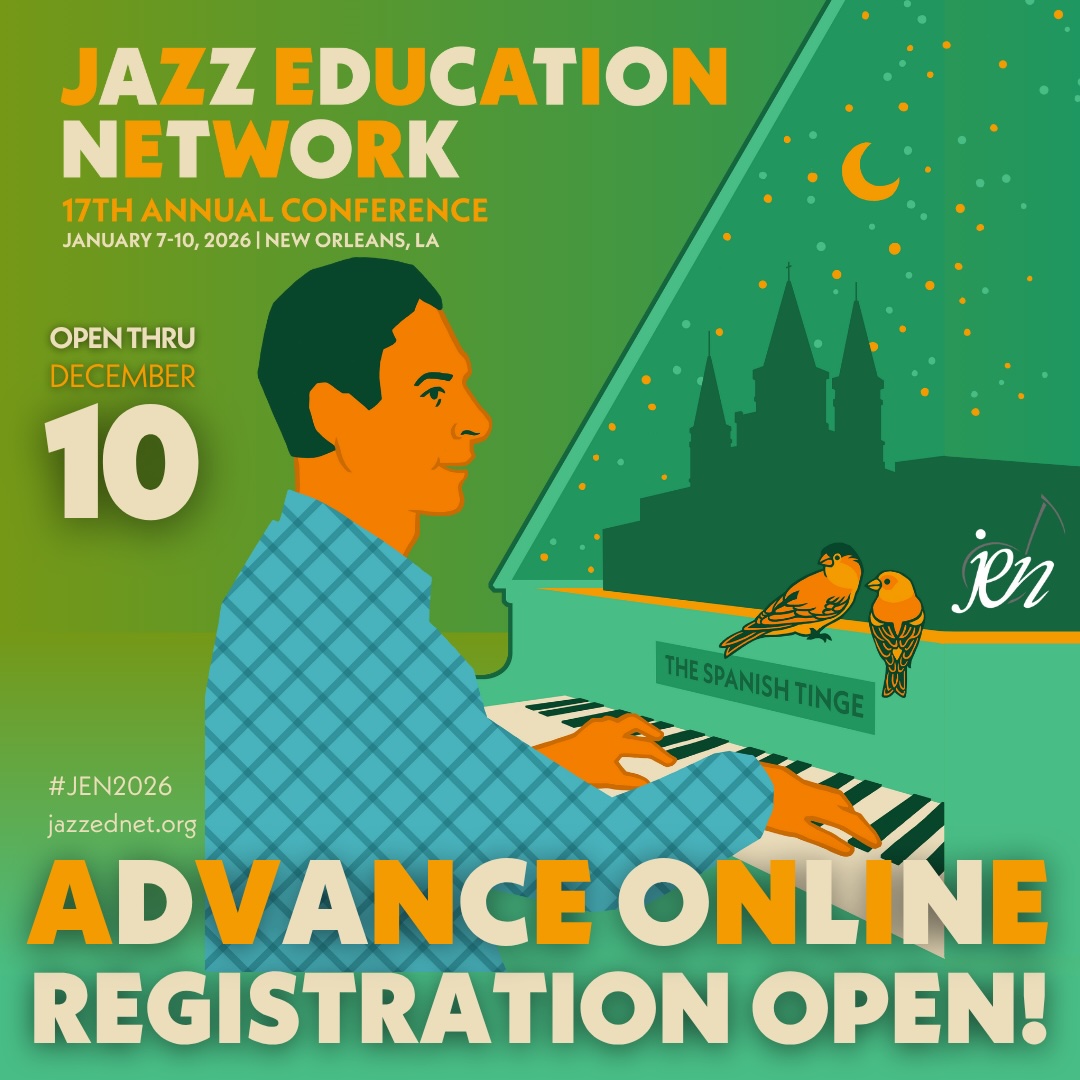Oct 28, 2025 10:47 AM
In Memoriam: Jack DeJohnette, 1942–2025
Jack DeJohnette, a bold and resourceful drummer and NEA Jazz Master who forged a unique vocabulary on the kit over his…
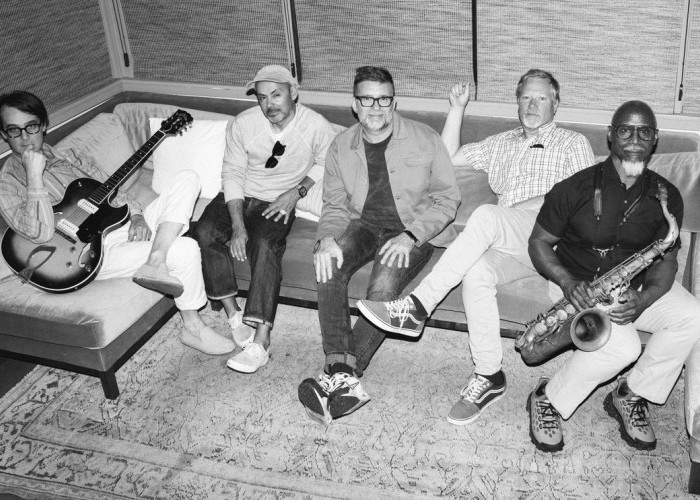
The Allstars, from left: Elgin Park, Aaron Redfield, Robert Walter, Chris Stillwell and Karl Denson.
(Photo: Courtesy Greyboy Allstars)As jazz groups with history and internal legacies go, the San Diego, California-based band The Greyboy Allstars can’t be accused of excessive self-importance or cerebralism. Instead, the band, formed casually in the early ’90s, has become well-known for as a torch-bearing machine for party jazz with groove-fueled music touching on boogaloo, funk, soul-jazz and the style formerly known as “acid jazz.” As keyboardist Robert Walter explains, as a kind of in-house mantra, “We value vibe over virtuosity.”
That said, the band has created a distinctive ensemble sound comprised of its component parts/players, including saxophonist/flutist Karl Denson — a bandleader in his own right — guitarist Elgin Park (aka Michael Andrews), bassist Chris Stillwell and drummer Aaron Redfield.
Roots and sideline/outtake chutes of the Greyboy sound are the subject of the newly released compendium Grab Bag: 2007–2023 (Knowledge Room/Elgin Park). Of the new archival release, Walters notes, “It was interesting to go back into the archive and look at these pieces which were like connective tissue from different periods of the band. Listening back to them all, I realize these pieces embrace the edges of our influences, whether it be jazz, progressive rock, more synth-oriented things. At this point, all of these flavors are part of what we regularly do, but at the time they were all a little outside of our normal thing.”
Taking a closer look at the Greyboy evolution, Walter recalls, “We really started out by bonding because of our shared love for a pretty specific era of records. We were mainly trying to, on the one hand, emulate, and the other, fit in with the tradition of late-1960s funk and jazz. It was almost a tribute, but with original tunes, too. We were really into all those funky Prestige and Blue Note records, Grant Green, Lou Donaldson, John Patton and Rusty Bryant as well as James Brown, Curtis Mayfield and stuff from the R&B and soul music world.
“As time went on, we became less imitative and also started to bring in more influences from our experience in the modern world. We still hold that classic music in very high regard and tend to judge our own things against it, but the palette has become much wider and truer to who we are as individuals and a group. I think it’s been really organic. We never really gave a thought to keeping up with trends or consciously trying to modernize but it just sorta happened to us.”
Individually, the Greyboy musicians have lent their talents to high-profile pop artists. Denson has been a horn player with the Rolling Stones, Walter played with Roger Waters (Pink Floyd) and Mike Gordon (Phish), and the rhythm section of Stillwell and Redfield boast a resume that includes Elton John and Charli XCX. Andrews’ musical stamp is on many film and television settings.
As to the influence of outside pop work on the Greyboy mothership, Walter asserts that “everyone’s various gigs help in a couple ways. We are always learning new things to bring to the group so it doesn’t get stale. When we come together it’s with a specific purpose and has some stylistic boundaries, which I think helps it keep its unique identity. In addition to all the rock stars, we have gotten to spend some time with the inventors of the genre we play: Fred Wesley, Melvin Sparks, Gary Bartz, George Porter Jr. Those experiences really helped us get it together when we were younger.”
Among the new album’s nine tracks pulled from the vaults, the main focus is on funk-linked riffs and grooves, from the opening “Slip The Grip” to the pocket-hugging “Watch Out Gail” and the self-descriptive “San Diegogo.”
Things take a fusion-eering turn on the tenser “Speed Freak,” and the track list includes a rare cover-version detour with a juiced-up take on Michael Jackson’s “The Way You Make Me Feel.”
Variety sneaks into the program, as well, attesting to the diverse interests of the players. Walter’s “Boxes,” for example, taps a more discernibly jazz harmony palette. He says that the tune “owes a lot to Wayne Shorter. I went through a phase a few years ago where I was learning a bunch of his tunes. They are all so inventive, unique and non-standard, even early on.
“Most of our music is variations on blues forms. This is more of a long string of modal ideas. It’s been part of our sets over the years and is a fun way to stretch and use some different muscles musically.”
By contrast, the closing “Pixie Sticks” is a playful quirk, a campy confection suitable for tiki torch backyard parties circa the mid-1960s. Walter explains that the songwriter, Stillwell, “is a great composer and our resident musical historian. He collects rare records and loves a lot of soundtracks, easy listening and exotica. This is a nod to the kitschier part of our musical tastes. It’s also a reminder to not take things too seriously. When he brought to tune to the band, he said, ‘I have sort of a Lawrence Welk thing.’ That’s not something an average funk band would go for, but we love it.”
Viewed historically, the Greyboy sound and aesthetic predates the rise of certain elements in jazz with R&B and groove consciousness in its DNA, an open approach with popular resonance, as practiced by such currently prominent figures as Snarky Puppy and Robert Glasper. Walter acknowledges that “a lot of the ideas that we embraced are very much in the mainstream by now. If you look at the lineups of jazz festivals now, there is much more love given to groups with a backbeat, fusion, etc. I just hope there is still a place for more historical-minded stuff, too, though. It’s all important.
“I think what we had going for us is our music came out of authentic nightlife, not academia. We played in clubs for dancers, and it inspired us. Nobody cared if we gracefully negotiated a tricky chord progression. It was about rhythm and emotion. It wasn’t a conceptual formula. Jazz at its worst can be both nerdy and snobby, at its best liberating and life affirming. I prefer music that makes me feel cool.” DB
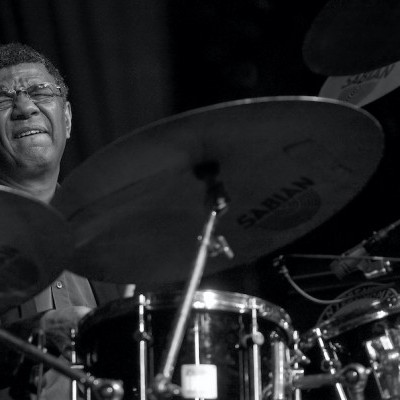
Jack DeJohnette boasted a musical resume that was as long as it was fearsome.
Oct 28, 2025 10:47 AM
Jack DeJohnette, a bold and resourceful drummer and NEA Jazz Master who forged a unique vocabulary on the kit over his…
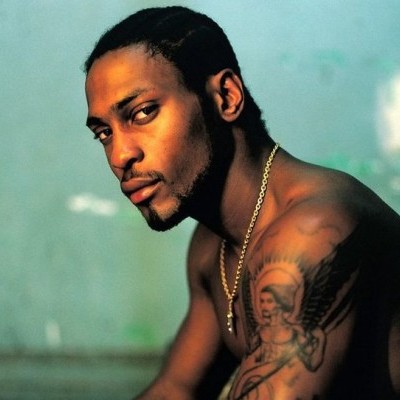
D’Angelo achieved commercial and critical success experimenting with a fusion of jazz, funk, soul, R&B and hip-hop.
Oct 14, 2025 1:47 PM
D’Angelo, a Grammy-winning R&B and neo-soul singer, guitarist and pianist who exerted a profound influence on 21st…
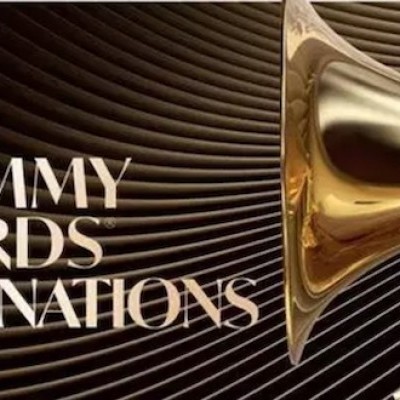
To see the complete list of nominations for the 2026 Grammy Awards, go to grammy.com.
Nov 11, 2025 12:35 PM
The nominations for the 2026 Grammy Awards are in, with plenty to smile about for the worlds of jazz, blues and beyond.…
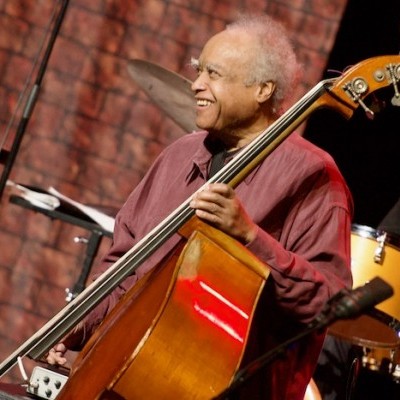
Drummond was cherished by generations of mainstream jazz listeners and bandleaders for his authoritative tonal presence, a defining quality of his style most apparent when he played his instrument unamplified.
Nov 4, 2025 11:39 AM
Ray Drummond, a first-call bassist who appeared on hundreds of albums as a sideman for some of the top names in jazz…

Jim McNeely’s singular body of work had a profound and lasting influence on many of today’s top jazz composers in the U.S. and in Europe.
Oct 7, 2025 3:40 PM
Pianist Jim McNeely, one of the most distinguished large ensemble jazz composers of his generation, died Sept. 26 at…

